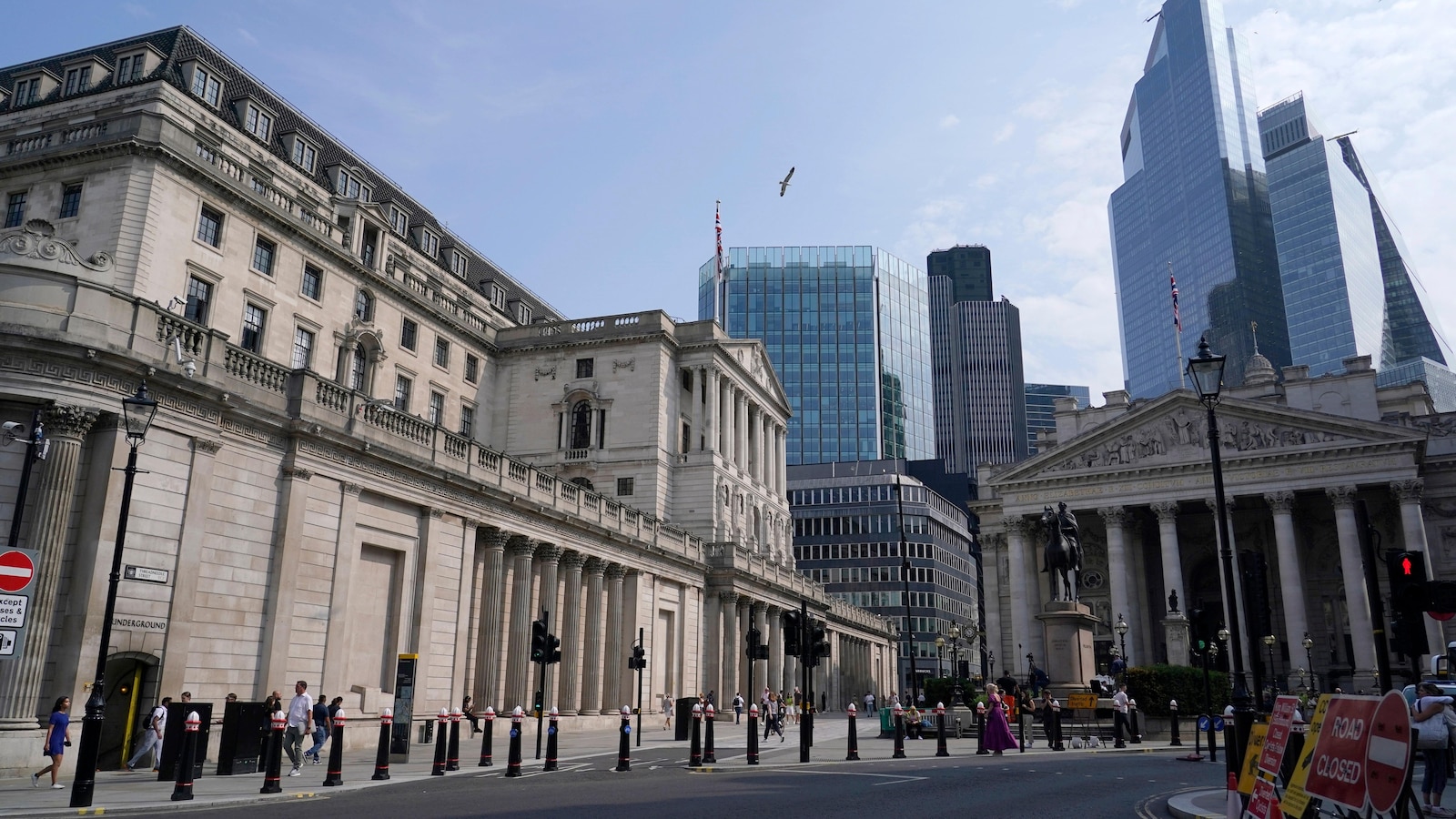LONDON — The Bank of England kept its main interest rate unchanged at 5% Thursday despite a big cut from the U.S. Federal Reserve, its first since the onset of the coronavirus pandemic more than four years ago.
The decision was widely expected amid ongoing concerns about inflation within the bank’s monetary policy committee, particularly the elevated levels in the crucial services sector, which accounts for around 80% of the British economy. Figures on Wednesday showed that inflation overall in the U.K. held steady at an annual rate of 2.2% in August, still above the bank’s goal.
Minutes to the meeting showed that eight of the nine members of the panel voted to keep rates unchanged, while one backed a quarter-point reduction.
“The economy has been evolving broadly as we expected. If that continues, we should be able to reduce rates gradually over time,” said Bank Gov. Andrew Bailey. “But it’s vital that inflation stays low, so we need to be careful not to cut too fast or by too much.”
The bank, which last month cut interest rates for the first time since the pandemic, is widely expected to reduce borrowing costs again at its next meeting in November, especially as it will have details of the government’s budget on Oct. 30.
On Wednesday, the Fed cut its main interest by half of a percentage point to roughly 4.8% from a two-decade high of 5.3%, where it had stood for 14 months. It also signaled that there will be more cuts to come in the next few months.
Central banks around the world dramatically increased borrowing costs from near zero during the coronavirus pandemic when prices started to shoot up, first as a result of supply chain issues built up and then because of Russia’s full-scale invasion of Ukraine which pushed up energy costs. As inflation rates have fallen from multi-decade highs recently, they have started cutting interest rates.
On Wednesday, the Fed became the latest major central bank to reduce borrowing costs, cutting its main interest by half of a percentage point to roughly 4.8% from a two-decade high of 5.3%, where it had stood for 14 months. It also signaled that there will be more cuts to come in the next few months.
The Bank of England is widely expected to reduce borrowing costs again at its next meeting in November, especially as it will have details of the government‘s budget on Oct. 30.
The new Labour government has said that it needs to plug a 22 billion pound ($29 billion) hole in the public finances and has indicated that it may have to raise taxes and lower spending, which would likely weigh on the near-term outlook for the British economy and put downward pressure on inflation.
Luke Bartholomew, deputy chief economist at abrdn, formerly Aberdeen Asset Management, said the Bank of England “will need to incorporate any fiscal changes in its next forecasts, which could provide the foundation for more rapid cuts in due course.”

